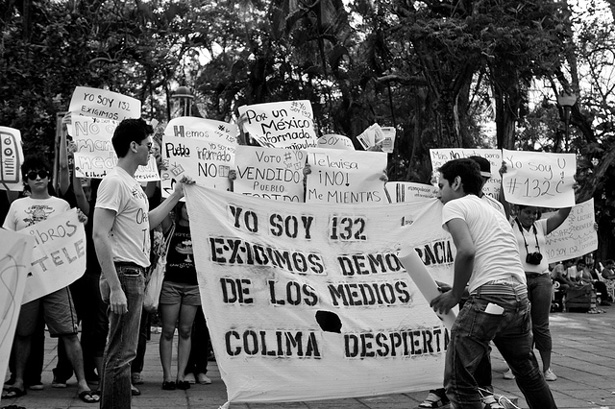-
Can Mexico Harness Its Demographic Dividend?
June 19, 2013 By Schuyler Null
Mexico’s 2012 elections were important for a host of reasons: the PRI party returned to power after 12 years of rule by the more conservative PAN; there was the first female presidential candidate from a major political party; and turn-out was historically high. They also proved that Mexico’s young people are not as apathetic as some may have thought, with the emergence of the #YoSoy132 student movement demanding fair press coverage.
Mexico is a young country but is no longer growing rapidly, having completed the demographic transition – when total fertility rates decline, following a similar trend in infant mortality – decades ago. Total fertility is now 2.2 children per woman, according to the latest UN data, and the median age is 25.9. However, the country still has a formidable “youth bulge” of people ages 15 to 29, the echo of previously high growth rates. If harnessed correctly, via well-paying jobs and ample opportunities for social advancement, this youth bulge can lower the country’s ratio of dependents (those outside the labor force) and producers, creating what demographers call a “demographic dividend” or “demographic bonus” of accelerated economic growth.
However, Pedro Salazar Ugarte on Boston Review writes that Mexico is in danger of missing this opportunity and perhaps worse, creating the seeds of further discontent in a country already reeling with violence. “Mexico is going through crucial and unprecedented times,” he writes:
It may take off or it may collapse. And I do not exaggerate or mean this rhetorically. Never before has Mexico had so many young people: nearly 30 million men and women aged 15-29, representing 26.4 percent of the country’s population. They are what we call in Mexico the “demographic bonus,” at first considered a great opportunity to enhance the country’s growth and development, and now a threat to its existence.
Despite improvements in education – 95 percent of the population has at least finished elementary school – and a relatively stable economy, most of these young adults are victims of the inequality and exclusion characteristic of Mexican society. In 2010, when the last census was taken in Mexico, 17.1 percent of the adolescents (15-17 years old) and 24.2 percent of the young adults living in Mexico did not go to school or have a job. Millions of them have been excluded from these key social institutions: learning and work. Young men and women, Mexico’s future, are being left without futures of their own.
Given these demographics, the only way for the country to avert disaster lies in achieving economic and social inclusion for young people. This is a very large challenge considering Mexico’s profound inequality: 52 million people, 46 percent of the population, live in poverty alongside the richest man on Earth – Carlos Slim Helú. These extreme disparities are straining social cohesion.
If Mexico does not guarantee its young people a fair chance at success, it can expect a violent future.
According to political demographer Richard Cincotta’s age structural model based on the historical relationship between median age and democratic governance, Mexico is in the in-between phase between unstable youthfulness and stable liberal democracy. Freedom House currently rates Mexico as “partly free” in its index of political rights and civil liberties.
Ugarte’s full impressions on Boston Review are worth a read. For more on all things Mexico, follow the Wilson Center’s Mexico Institute.
Sources: Boston Review, Freedom House, Mexico Institute’s Elections Guide, UN Population Division.
Photo Credit: #YoSoy132 protesters, courtesy of flickr user Renato Guerra.
Topics: democracy and governance, demography, development, economics, featured, Mexico, On the Beat, population, poverty, security, youth
 A Publication of the Stimson Center.
A Publication of the Stimson Center.



